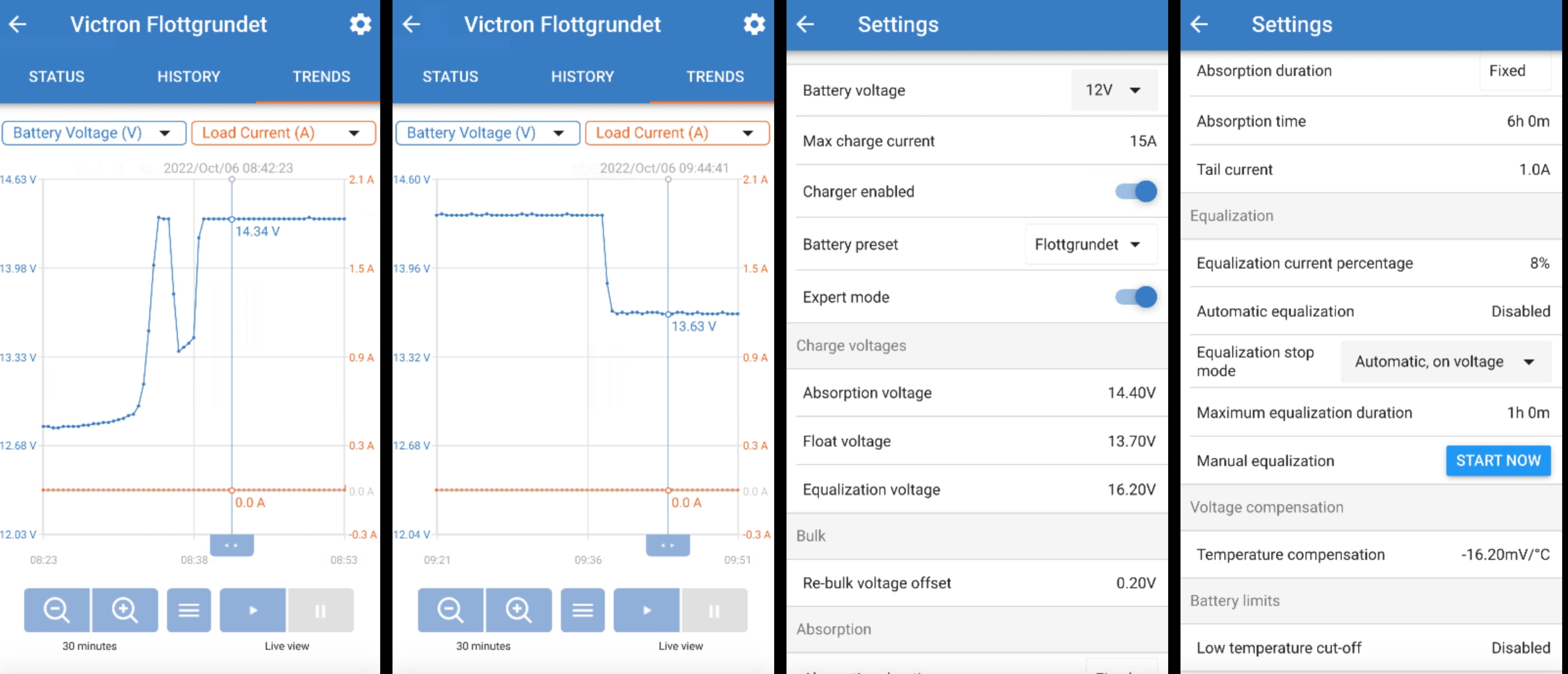So I have a SmartSolar MPPT 100/15 where I have set bulk voltage to 14.4V and float to 13.7V. Temp coefficient is set to the default -16mV/C. The charger and the battery is in the same small non-heated room, with a temp of 12C (measured by a termometer on top of the charger). This temp has been stable for at least a week now.
With my settings, and a temp diff from the base temp of 25-12=13C, then the bulk and float voltages should be 0.016*13=0.2V higher (as the room temp is lower than 25C). So I should read 14.6V bulk, and 13.9V float. But when I check what is happening, the bulk voltage ends up at 14.34V, and the float at 13.63.
Not only is the difference smaller (0.06 to 0.07V) than the expected diff of 0.2V, but it's also in the wrong direction. The action of the charger indicates that it belives the room temp to be 0.07/0.016=4.4C higher than 25, i.e 29C, while the termometer on top of the charger says 12C.
How can this happen? There is obviously no power coming from the panels during the night, and there is no load either. Well, actually there is always a small constant background load of 100 mA from a security camera, but this is so small that it doesn't even show up in the curves, and anyway shouldn't heat up the internals of the charger.
Then user manual says: "By default, the solar charger uses its internal temperature for battery temperature compensated charging. An internal temperature reading is taken in the morning and then again when the solar charger has been idle for at least one hour, for example when the charger is not actively charging a battery or supplying a load."
My assumption was that the morning temp reading would always be taken even if the charger was supplying a load (i.e. 100mA in my case)? And the criteria "not actively charging a battery or supplying a load" would only be used for subsequent temp readings during the day?
If I disable temp compensation I get the correct values of 14.4 and 13.7V, but as the installation is in a non-heated cottage which is not accessible during wintertime (with common low temps of -30C/-22F), it would really be good to have a decent temp compansation working...
- Home
- Anonymous
- Sign in
- Create
- Spaces
- Grafana
- Node-Red
- Unsupported topics
- Questions & Answers
- Modifications
- Communauté francophone
- Deutschsprachiger Bereich
- Preguntas en Español
- Explore
- Topics
- Questions
- Ideas
- Articles
- Badges
question
SmartSolar MPPT 100/15 temperature compensation doesn't work
The temperature compensation is working, what you are seeing is the error created by the approximation that the solar controller and batteries are at the same temperature. The controller will always have some self consumption and that could be enough to increase the temperature of the circuit board above ambient. I would never rely on using the MPPT temperature, my boat builder did, my batteries are in the engine bay and the controller is in a cupboard inside the cabin, I fitted a temperature sensor to the batteries.
Fit a Smart Battery sense and connect it to the solar controller by Bluetooth so you have a more accurate battery temperature.
Ideally the Status page would also have a new "Temp" field, containing the temp which the controller currently uses for compensation. This would be live data for an external sensor, but just the static snapshot for the internal one.
Related Resources
question details
68 People are following this question.
